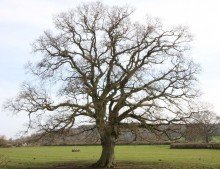This page is about finding peace and happiness in appreciation of the natural beauty that surrounds us. Each week we will explore some of Dorset’s beautiful places in search of inspiration for those moments of gratitude for our lovely planet.
Why a Mandala?

The word “mandala” comes from the Sanskrit word for “circle”. Mandalas are patterns, shapes and symbols traditionally used for meditation and common to many spiritual philosophies including Christianity, Hinduism, Buddhism and Islam.
Circles and Circular Patterns

Circles appear not only in the natural world around us (our planet, our solar system and in the ripples on the surface of a pond as the water boatmen land), but in our relationships too. We belong to family circles, wider circles of friends, community, and society. Circles appeal to us at a deep and fundamental level..
“A circle is the reflection of eternity. It has no beginning and it has no end – and if you put several circles over each other, then you get a spiral.” Maynard James Keenan, musician
We can see circles, patterns and shapes in plants and flowers, in snow crystals and rain drops, in flowing water and still pools, in clouds and in the eyes of our loved ones.
“Rest is not idleness, and to lie sometimes on the grass under the trees on a summer’s day, listening to the murmur of water, or watching the clouds float across the sky, is by no means a waste of time.”
Sir John Lubbock 1834 – 1913 English naturalist and archaeologist
Using Nature’s Mandalas

It helps to find a quiet and peaceful place. If you live in a town, this could be in a park or a garden: after all, the hum of traffic can be as soothing a backdrop as water or birdsong is to the country soul.
Look about you and find the patterns in the natural forms around you. It could be a tree with its pattern of leaves in summer or the intricate structure of branches and twigs in winter. It could be water – a river, stream, pool or even the wind blowing across the surface of a small puddle. A flower with it’s circular pattern of petals and stamens or a fallen leaf. Look at it and notice the colours, the patterns, the way the lines meet and part again.
Focusing on the pattern of lines and shapes, relax your shoulders and breathe in gently to a count of four, hold your breath to a count of four, breathe out to a count of four, and hold for a count of four. Do this four times (we call this ‘square breathing’) and let your focus soften.
Stay in the moment
How it Helps
Connecting with the natural world brings us down to earth – literally. It helps us to feel grounded, to pay attention to small things. It can help to lower our blood pressure, release anger and frustration and the tension that can build up during a busy life. Breathing slowly and mindfully can reduce your heart rate and relax you. It takes only a few minutes each day, but we can reap the benefits by making time to “stand and stare” only once or twice a week. Quiet reflection soothes the soul, and now research shows that it improves health, life expectancy and relationships too.
Dorset’s Nature Mandala of the Week
This beautiful tree still waits, at the beginning of April, to burst into leaf with the coming of Spring. It stands in a field just a few hundred yards along the North Dorset Trailway from it’s starting point in Sturminster Newton. There is a bench nearby from which you can sit and appreciate the peace and beauty of this place, and admire the intricate patterns made by the branches of this old oak tree.
Miranda Smith
I write about finding happiness through appreciation of the world around us. If you would like to know more. Visit www.mistletoemoon.com.







